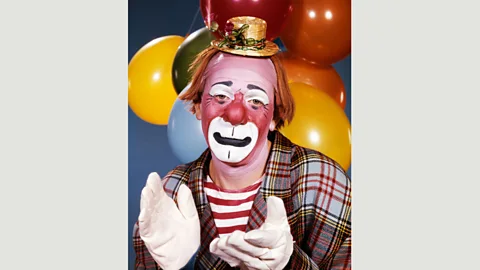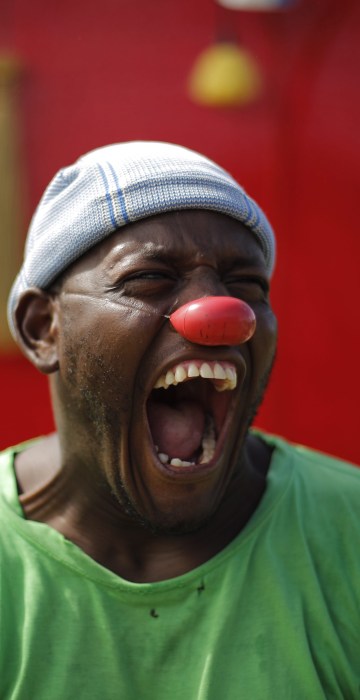Get This Report on All Occasion Performers
The Ultimate Guide To All Occasion Performers
Table of ContentsFascination About All Occasion PerformersLittle Known Facts About All Occasion Performers.All about All Occasion PerformersOur All Occasion Performers Statements5 Easy Facts About All Occasion Performers Explained
He specialized in pigs and burros, which he trained and marketed to other clowns. He likewise provided an act with an experienced rhinoceros and is the only individual in circus background to present a tightrope walking elephant.He was additionally a benefactor who provided generously to several charities and he set up the initial monolith to soldiers eliminated during the Civil Battle - Party clown. Beginnings of the Auguste characterThere is a commonly informed legend regarding the origins of the Auguste clown. According to the tale, an American acrobat named Tom Belling was carrying out with a circus in Germany in 1869
Belling took off running, finishing up in the circus field where he fell over the ringcurb. In his humiliation and rush to get away, he dropped over the ringcurb again on his means out. The supervisor commanded that Belling continue appearing as the Auguste.
Things about All Occasion Performers
For one point, the word Auguste did not exist in the German language up until after the character ended up being preferred. Among the theories of the real beginning is that Belling duplicated the character from the R'izhii (Red Haired) clowns he saw when he explored Russia with a circus (https://filesharingtalk.com/members/597482-all0ccperf0rm?tab=aboutme&simple=1). Characters like the auguste certainly existed formerly

The dancing later on became referred to as faucet dancing. It must be noted that there are alternate 'origins' for the tramp character"one of which was the traveling "hoe boys," or itinerant ranch employees, that rode the rails from one town to one more, wiping the soot far from their eyes & mouth.
Indicators on All Occasion Performers You Need To Know
Keep in mind that the scare wig, exaggerated lips and eyes, extra-large apparel and props of the American clown, props such a seltzer water, packed clubs, exploding cigars, and whistles loaded with residue, are not Grimaldi's. They belong to Tambo and Bones. The English blackface comic Charles Mathews came to America in 1822 to execute and examined black life and custom-mades.
In such plays there is a mishmash of personalities including "kings" and "saints", cross-dressing, and blackface duties; the faces of Morris (or "Moorish") dancers were additionally smudged. A lot of were executed by bad males in the starving time after Xmas.
If rejected, they would certainly rake the culprit's backyard. The Derby Play of the Tup was done for food and beer by unemployed youths. This use of blackface for political activity camouflaged as entertainment persisted in America when the offspring of these men smudged their faces to protest tax obligations. One such demonstration has gone into American history as the Boston Tea Ceremony.
The 9-Minute Rule for All Occasion Performers

While not the lush events we think of today, some early, rougher kinds of traveling circus were preferred in America from Revolutionary times-- George Washington was a follower. Blackface clowns done in them from at the very least the 1810s and perhaps prior to; they were a staple by the 1820s. The vast red or white mouth painted on by contemporary clowns is a remnant of the blackface mask.
In lots of aspects minstrelsy was born when these performers moved their acts from the camping tent to the phase of American range cinemas. There was a strong element of clowning in minstrelsy. The blackface mask was a clown's disguise, exaggerating the facial features into a cartoon, a caricature. The blackface clown may be the precursor of today's anodyne circus clown, but otherwise both are as opposite as blackface and whiteface.
Some Known Factual Statements About All Occasion Performers
That in nineteenth-century America was more of an Apart from the ? What better mask than blackface? In many traditions the clown would reveal some physical deformity, like a hunchback, dwarfism-- or like Jim Crow, lameness - Corporate events near me. And since he was different, an Others, the clown was allowed to state and do points nobody else could.
Witticism and apology were main to minstrelsy. It's intriguing that in the West African cultures where most slaves came, the poet-singer griot offered the exact same ridiculing jester function when the occasion emerged. Related Site That might have something to do with the interested (to us, recalling) simplicity with which Southern Blacks accepted not simply the music yet even the undermining humor of minstrelsy.

Emmett Kelly was the very best recognized tramp clown with his character "Weary Willie."Tramp clowns are knowledgeable: + jugglers + magicians + pianists + chalk talk artist + bikers. There are happy vagrants and mad tramps. There seems to be a vast range of tramp clowns - https://all0ccperf0rm.carrd.co/. The most typical aspect of vagrant clowns is that absolutely nothing is conventional other than the white mouth, which was originated from minstrel blackface make-up.